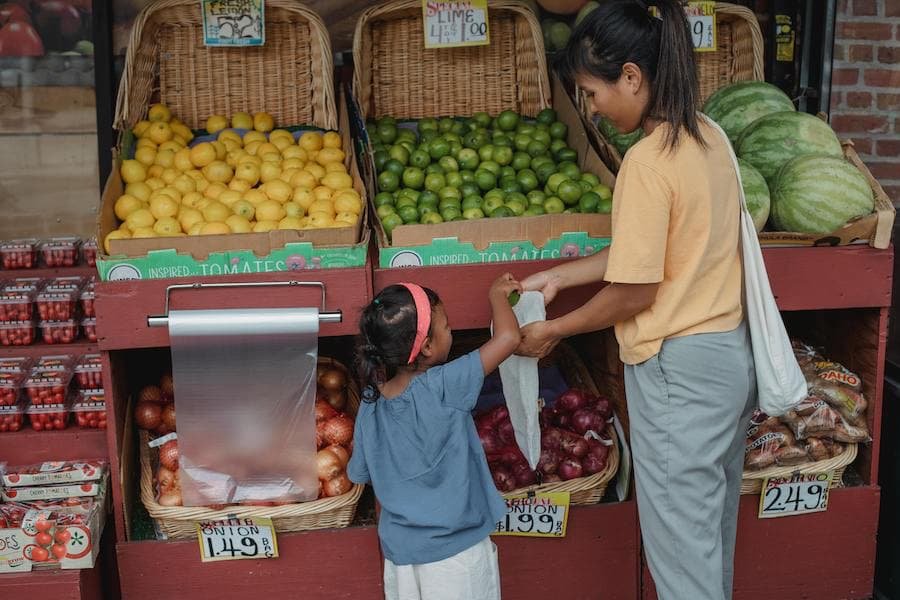
 Katie Wood
Freediver, Writer, Explorer
Katie Wood
Freediver, Writer, Explorer

 Katie Wood
Freediver, Writer, Explorer
Katie Wood
Freediver, Writer, Explorer
I imagine that many of you are already engaged in numerous practices aimed at preserving the sustainability of our shared home. You might recycle glass, plastic, and paper, compost organic waste, use reusable bags while shopping, and prioritize public transportation, bicycles, or fuel-efficient cars. However, have you carefully considered the environmental impact of your dietary choices and made adjustments to safeguard not just the land and water around us but also your health and the prosperity of future generations?
In January 2019, The New York Times highlighted a comprehensive report by the EAT-Lancet Commission on Food, Planet, and Health. Compiled by 37 experts from 16 countries, the report aimed to establish a global food economy that could address chronic diseases in affluent nations, enhance nutrition in impoverished ones, and do so without causing harm to the planet. The objective was to outline a sustainable and nutritious diet capable of feeding the projected global population of nearly 10 billion people by 2050.
For over a century, the west has been consuming an excessively high amount of animal products, particularly since 1985 when more than two-thirds of protein intake shifted from plants to animals, primarily beef cattle. These animals require significant amounts of grain to produce meat, contributing to greenhouse gas emissions and high rates of chronic diseases due to saturated fat and calorie content.
Dr. Walter C. Willett, a professor at the Harvard T.H. Chan School of Public Health and a contributor to the Lancet report, emphasized that the current level of beef consumption is unsustainable for the future. The Lancet editorial stated that intensive meat production is the leading contributor to climate change and highlighted the detrimental impact of prevailing diets on both human health and the planet.
While the Lancet report does not mandate vegetarianism or veganism, it suggests that individuals in affluent countries limit red meat consumption, particularly beef and lamb, to one 3-ounce serving per week or one 6-ounce serving every two weeks. Poultry, pork, and fish are considered better for health and the environment, with a lower grain-to-meat ratio and healthier fat content. However, the report encourages gradually adopting a plant-based diet with farmed seafood as the primary animal food, along with moderate amounts of poultry and eggs. Studies indicate that the current high-protein diets, prevalent in the United States, may limit longevity, emphasizing the importance of reevaluating protein consumption patterns for both individual health and planetary well-being.

Sustainable practices in food and nutrition encompass a comprehensive set of actions directed toward meeting current needs while preserving the ability of future generations to meet their own. This approach prioritizes environmental stewardship by advocating for responsible use of natural resources, minimizing water consumption, and promoting regenerative agricultural methods to enhance soil health. Local sourcing and seasonality are emphasized to reduce the carbon footprint associated with transportation and support local economies. Additionally, reducing food waste at every stage of the supply chain, ensuring humane treatment of animals in protein production, and fostering fair trade practices contribute to a socially responsible and equitable food system. Consumer education plays a vital role in raising awareness about the environmental and social impact of food choices, empowering individuals to make informed decisions. The circular economy model is embraced to minimize waste and promote resource efficiency, while innovative technologies are leveraged to enhance efficiency in food production. Government policies and community engagement are crucial components in fostering sustainable practices, with the ultimate goal of creating resilient and ecologically sound food systems capable of meeting the nutritional needs of present and future generations.

Embracing a diverse range of protein sources is a pivotal aspect of fostering a well-rounded and sustainable approach to nutrition. Rather than relying predominantly on traditional animal-based proteins, incorporating a variety of plant-based sources such as legumes, nuts, seeds, and whole grains ensures a more comprehensive intake of essential amino acids and nutrients. This diversification not only contributes to individual health by providing a broader spectrum of beneficial compounds but also addresses environmental concerns associated with intensive animal agriculture. Including alternative protein sources like tofu, tempeh, and plant-based meat substitutes offers versatility in meal planning while reducing the ecological footprint linked to livestock production. By encouraging a diverse protein palette, individuals can not only enjoy a more flavorful and culturally rich diet but also contribute to a more sustainable and resilient food system that meets the needs of a growing global population.

Elevating public awareness stands as a fundamental pillar in the pursuit of positive societal change towards sustainable and mindful dietary practices. In the realm of nutrition, fostering public awareness entails disseminating information about the impact of dietary choices on both individual health and the environment. It involves initiatives to educate communities about the importance of understanding where food comes from, the ecological consequences of specific dietary patterns, and the potential benefits of making informed and conscious choices. Through educational campaigns, media outreach, and community programs, public awareness aims to empower individuals to make conscious decisions about their food consumption. This informed approach not only contributes to personal well-being but also encourages a collective shift towards more sustainable and ethical food systems. By emphasizing the interconnectedness of dietary choices with broader environmental and social issues, public awareness becomes a catalyst for positive change, inspiring individuals to align their behaviors with the greater goal of creating a healthier and more sustainable future.

In reflection, the journey from contemplating the impact of dietary choices to delving into the intricacies of sustainable practices, diverse protein sources, and the imperative role of public awareness unveils a tapestry of interconnected elements that shape the landscape of our food system. The call to action initiated by questioning our individual dietary footprints resonates strongly in the broader context of global efforts toward a sustainable and resilient future. The data presented sheds light on the intricate balance required to nourish a burgeoning population while safeguarding the health of our planet. Driven by the revelations of the EAT-Lancet Commission report, we confront the stark reality of our dietary habits and their implications for both human health and the environment.
The discourse on sustainable practices underscores the necessity of responsible resource utilization, ethical animal husbandry, and the adoption of innovative technologies to harmonize agriculture with nature. Likewise, the advocacy for a diverse array of protein sources echoes the importance of embracing nutritional variety and reducing reliance on resource-intensive animal products. As we navigate these considerations, it becomes evident that a paradigm shift in public awareness is paramount. The dissemination of knowledge, through educational campaigns and community engagement, emerges as a powerful catalyst for transforming individual choices into collective actions.
As we navigate this complex terrain of nutrition, sustainability, and consciousness, the call to reevaluate protein consumption patterns is not merely a dietary recommendation but a profound invitation to reassess our relationship with the planet. It beckons us to tread lightly, make informed choices, and contribute collectively to the emergence of a more sustainable, equitable, and resilient food system—one that honors the delicate balance between nourishing ourselves and preserving the intricate web of life on Earth.